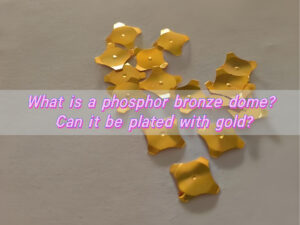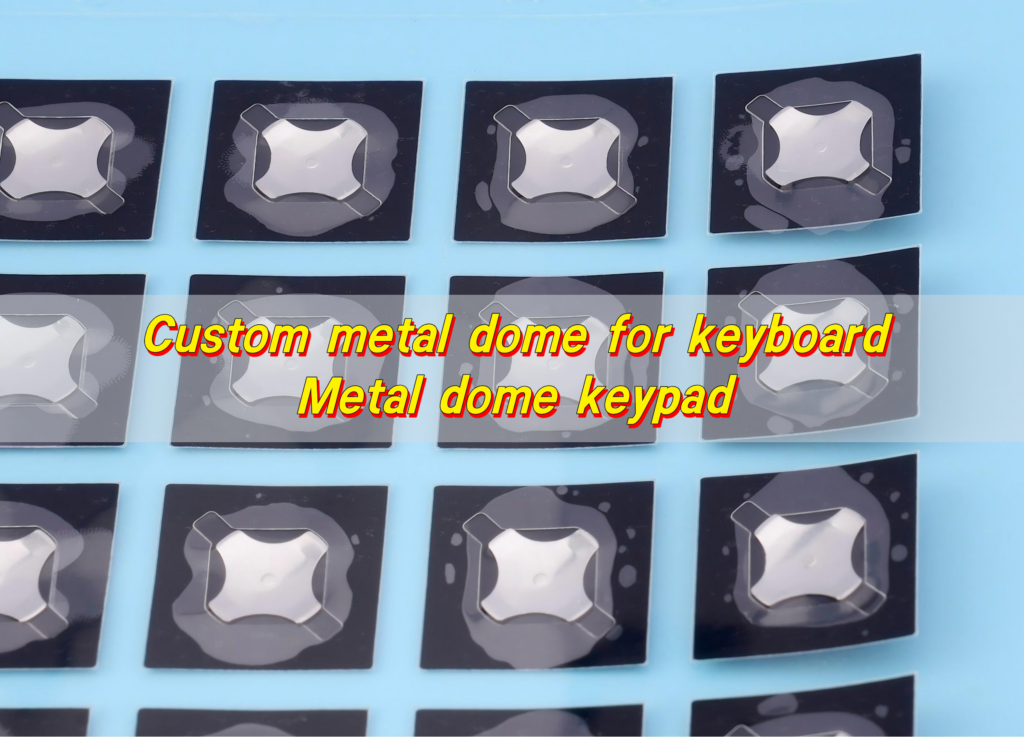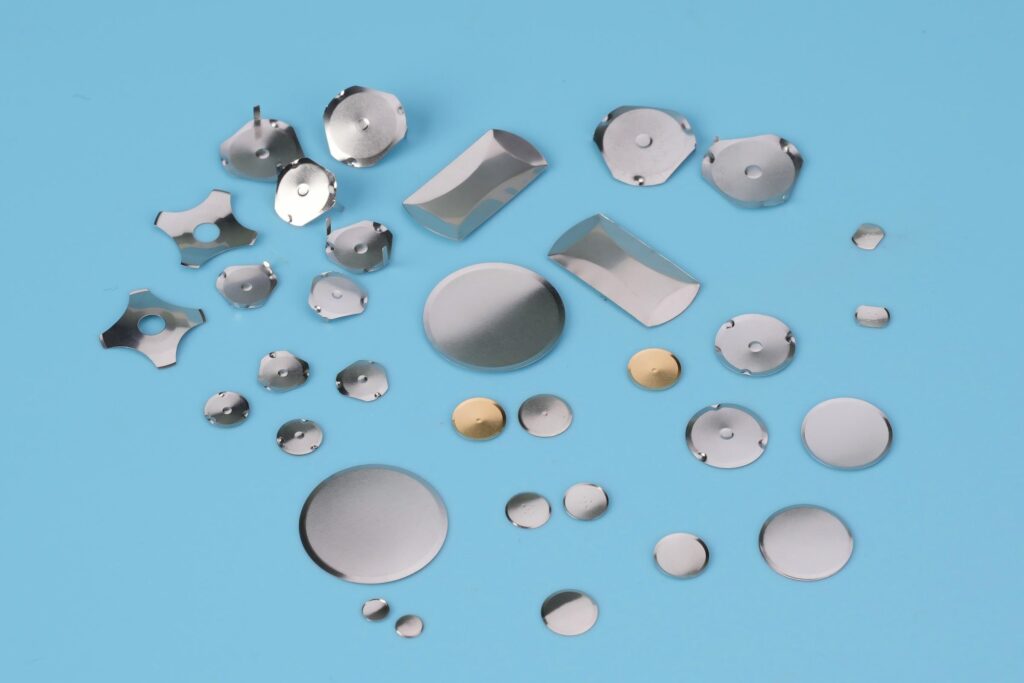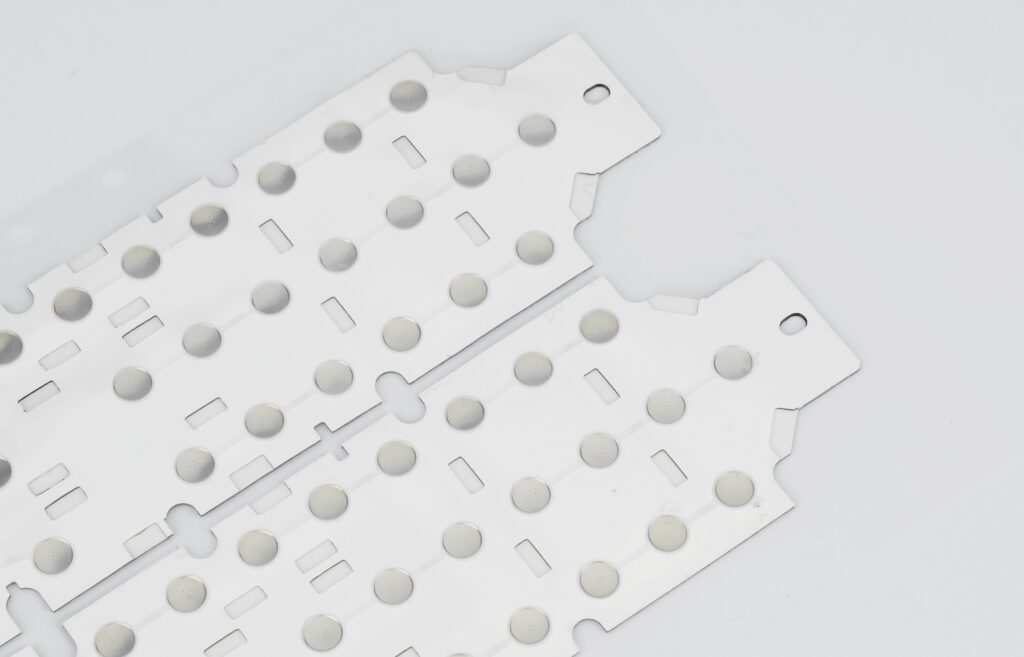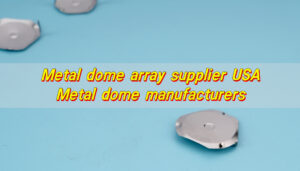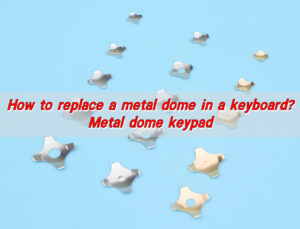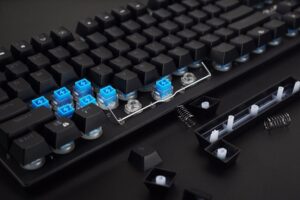What is a custom metal dome for keyboard?
Custom metal dome for keyboard is a tactile switching element built for non-typing keypads. Unlike traditional typing keyboards, these are structured panels made of individual buttons using metal domes.
Each dome acts as a mechanical switch, giving a crisp tactile response when pressed. These domes are made from stainless steel and are placed within a layered structure that includes a circuit and graphic overlay.
The word “custom” means the dome’s shape, size, force, feel, and layout can be tailored exactly to the application. Whether it’s a metal dome keypad, a handheld device, or an industrial control panel, this switch technology offers targeted performance.
Compared to generic keypads, custom metal domes deliver more accuracy, better feedback, and greater durability.
What are the benefits of customizing metal dome keyboard?
First, the tactile feedback becomes more precise. You can choose how sharp, soft, loud, or quiet each key feels.
Second, custom metal domes extend the lifespan of the keyboard. Standard membrane keys wear out quickly, especially under continuous use. But a dome made from high-grade stainless steel can withstand over one million actuations.
Third, custom keyboard lets you place each key exactly where it’s needed. Whether it’s grouped for faster operation or spaced for gloved hands, the result is a better workflow.
Fourth, the overlay and graphics can be fully customized. The product becomes both functional and visually powerful.
Lastly, you reduce labor time in manufacturing. With dome arrays or tape and reel packaging, assembly becomes automated. You can boost placement speed and reduce errors, saving costs long-term.
How do you select the right dome shape for custom keyboard?
Different applications call for different tactile responses, force levels, and space considerations. That’s why dome selection must be aligned with your product’s environment.
The first question to ask is how much force should the user apply. If it’s a medical tool used all day, lighter force is better. If it’s an outdoor tool, heavier force may prevent accidental presses.
Next, consider space constraints. Larger domes offer deeper feedback but need more room. Small devices may require compact domes.
Also ask how the key should feel. Should it be clicky or soft? Loud or silent? These factors influence dome material, thickness, and shape.
Finally, review your operating environment. In hot, humid, or dusty spaces, domes with anti-corrosion coatings or reinforced edges offer more reliability.
What shapes do metal domes come in?
Metal domes come in several standard shapes. Each type has unique mechanical properties, allowing you to match the shape with the right feedback and performance level.
Four-leg domes are the most common. Their shape provides strong tactile feedback and consistent actuation. They offer balanced force distribution and are ideal for most industrial and consumer products.
Round domes are compact and suited for dense layouts. They allow more buttons in smaller spaces. Their tactile feedback is softer compared to four-leg types, but they’re efficient where space is limited.
Triangle domes are smaller and designed for tight configurations. Though their feel is slightly more muted, they’re easy to install and quick to produce.
Oblong domes are meant for longer keys or rocker switches. If a button needs to be pressed from more than one point—like a “+/-” or “Enter” key—this shape ensures even activation across the key surface.
Selecting the right shape depends on space, feel, actuation force, and layout needs. It’s common to combine multiple dome types in one keypad for more control.
How does a dome keyboard differ from membrane keyboard?
Both dome and membrane keyboards are found in custom keypads, but they function differently. A membrane keyboard uses a rubber dome that collapses to create contact. This makes the press feel soft or spongy. It’s low-cost but lacks the crisp response users expect in demanding environments.
Dome keyboard, on the other hand, uses stainless steel domes. When pressed, the dome collapses with a snap, connecting the circuit below. It provides sharp tactile feedback and greater accuracy.
Membrane keyboards are best for simple controls where cost matters more than performance. They’re quiet but have a shorter lifespan and limited customization.
Dome keyboards are ideal for critical applications where feel, durability, and speed matter. From medical monitors to rugged field equipment, dome keyboards outperform in high-pressure conditions.
Here’s a quick comparison:
- Tactile Feel: Dome = sharp and responsive. Membrane = soft and muted.
- Lifespan: Dome = over 1 million presses. Membrane = about 500,000.
- Feedback Sound: Dome = audible click. Membrane = almost silent.
- Customization: Dome = high. Membrane = limited.
- Application: Dome = industrial, medical, high-end. Membrane = consumer, general use.
How does a dome keyboard work?
Dome keyboard consists of three core layers: the circuit layer, the spacer, and the overlay. The metal dome is placed on the circuit. When a user presses the key, the dome flexes and bridges the contact on the circuit. That creates an electrical connection.
Once the pressure is released, the dome springs back to its original shape. This rapid movement creates a tactile snap—giving the user instant feedback that the key has registered.
Some dome keyboards include LEDs or backlights. Others use printed symbols or embossed graphics. These extra layers don’t change how the dome works but enhance how it looks and feels.
In custom arrays, metal domes are placed precisely over contact points. Each one is tested for actuation force and snap ratio to ensure consistency. Whether the keypad has 5 or 50 keys, the dome system delivers fast and reliable inputs.
This structure is highly durable. The materials resist moisture, heat, and chemicals. It works in hospitals, factories, warehouses, and even outdoor environments.
Conclusion:
Custom metal dome for keyboard is more than just a keypad. Unlike traditional membrane designs, dome keyboards provide superior tactile feedback, longer life, and full customization. Whether your device demands a crisp, responsive key press or a specific shape and layout, metal dome keypads deliver dependable performance.
Choosing the right dome shape, force, and design lets you build a keypad that feels great, lasts long, and looks exactly how you want.
Need expert support for your next project? Contact our team at sales@metal-domes.com


